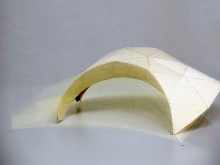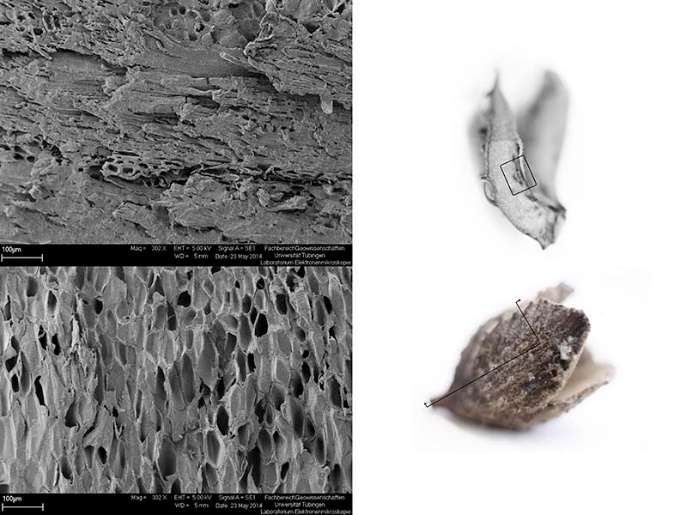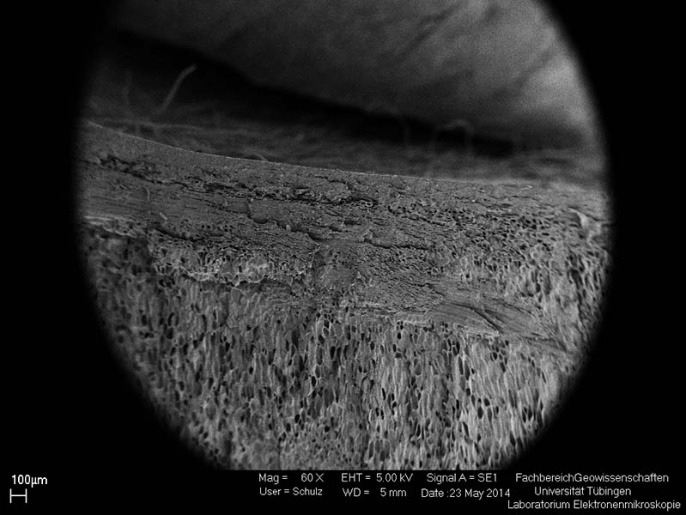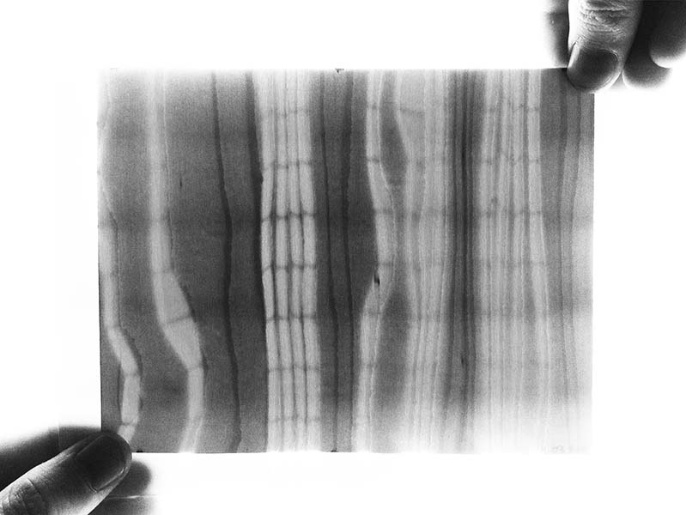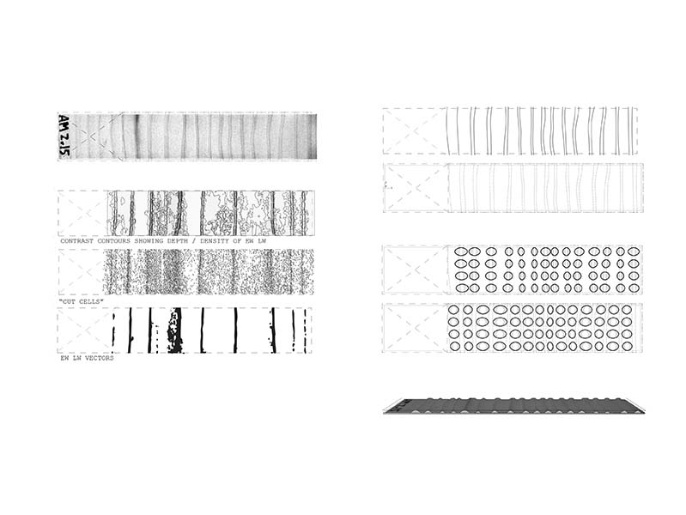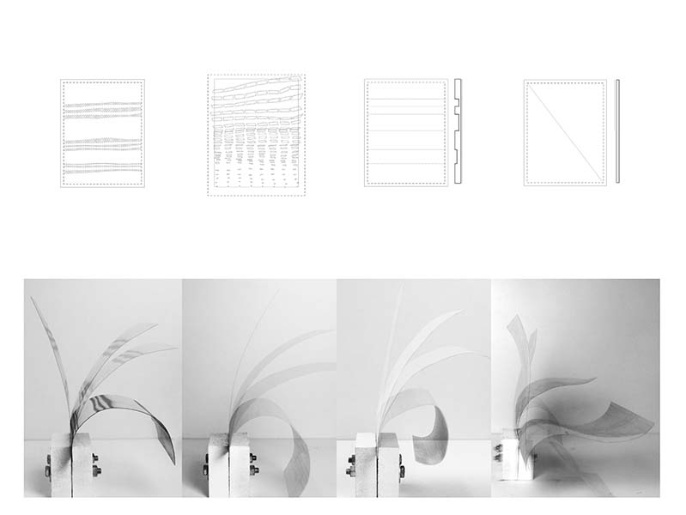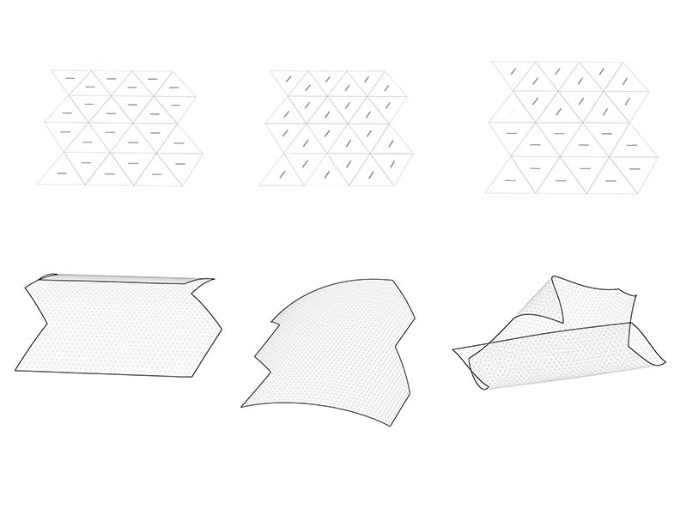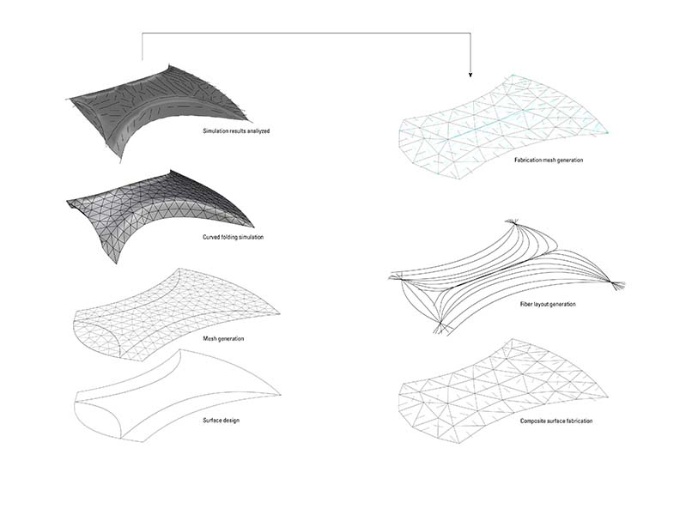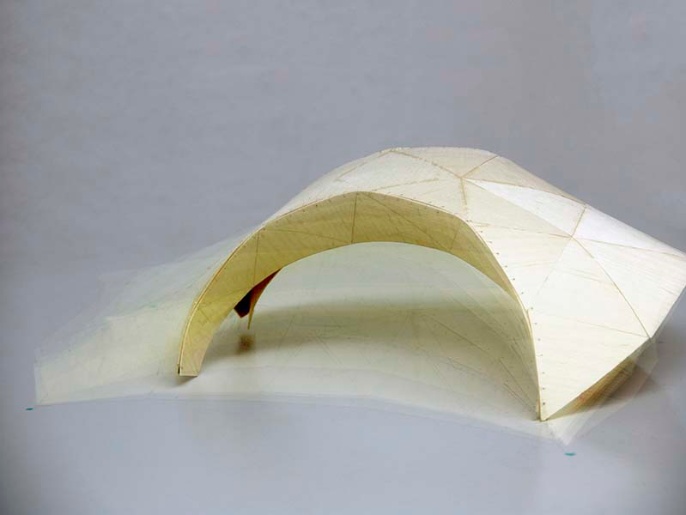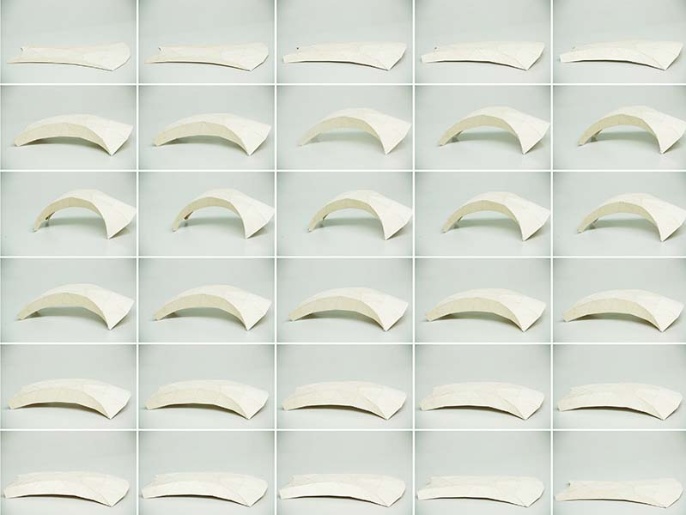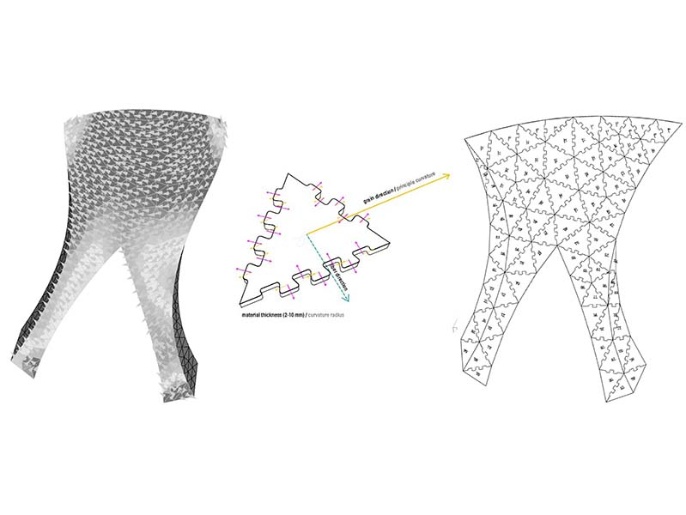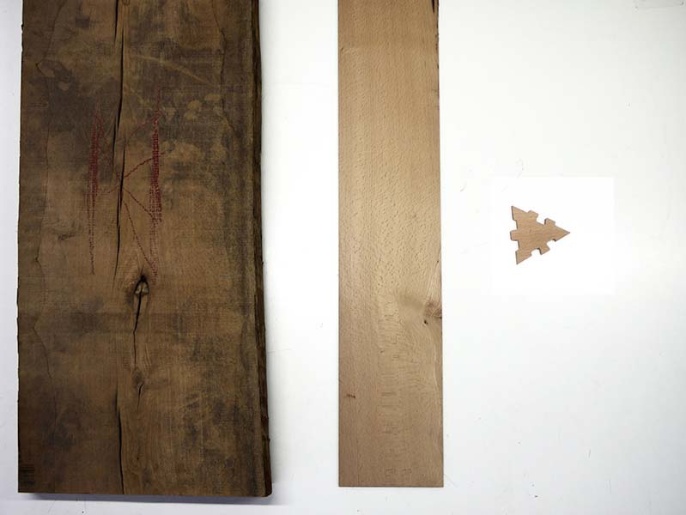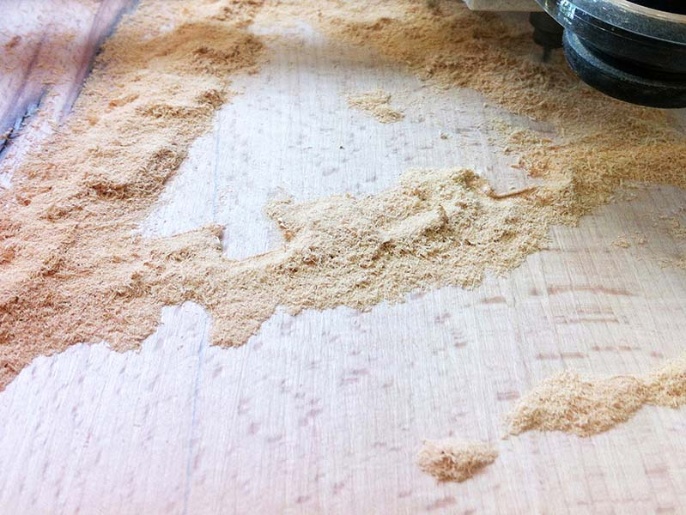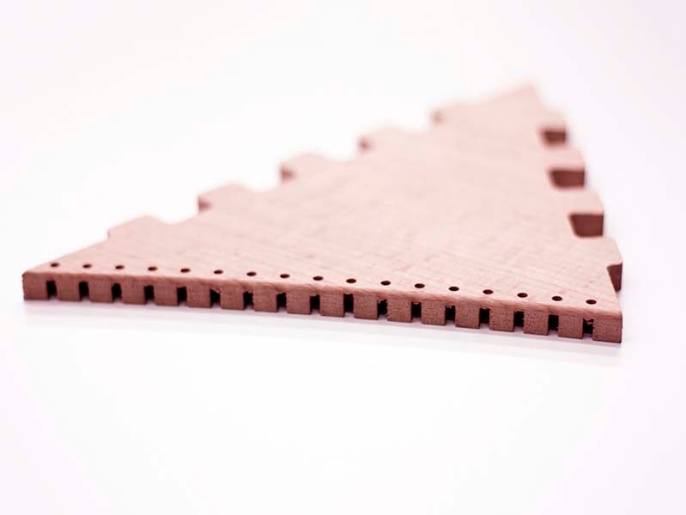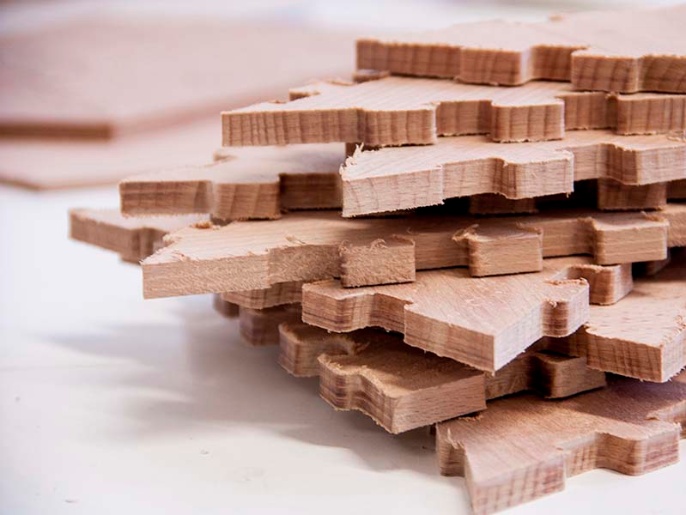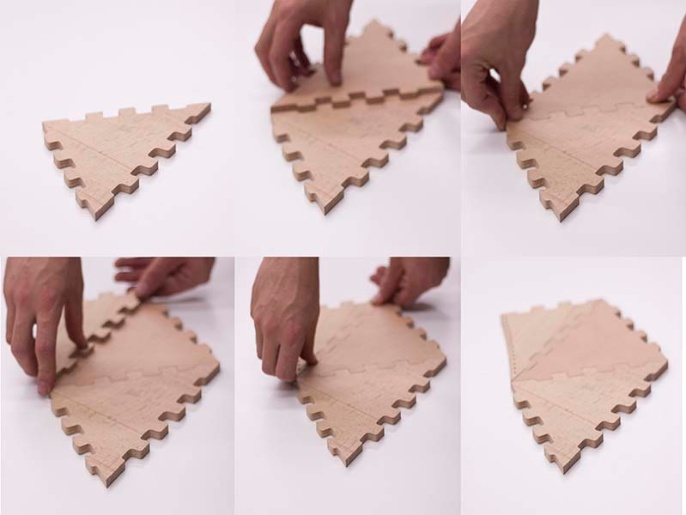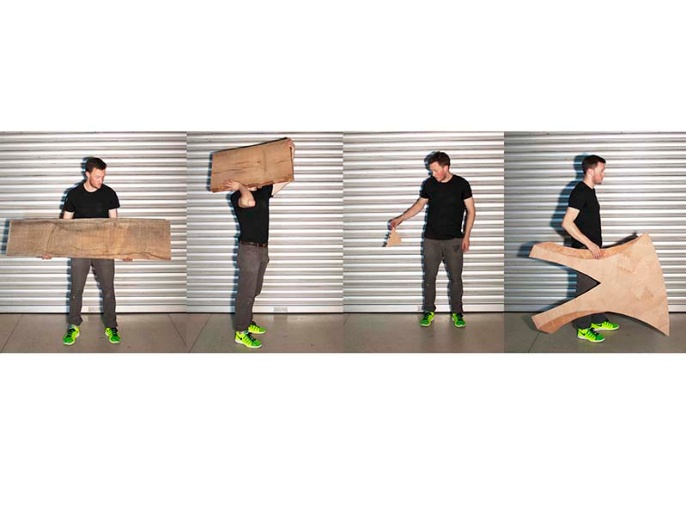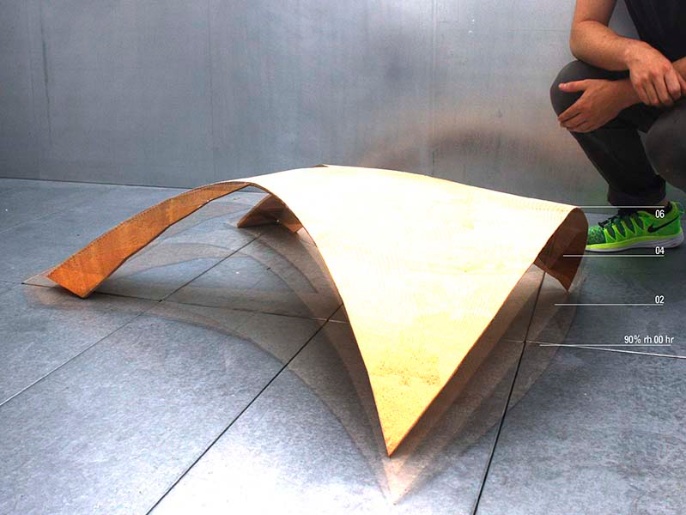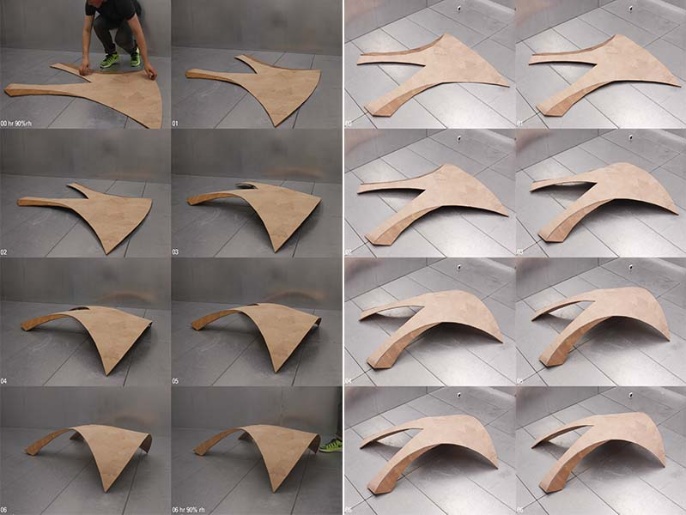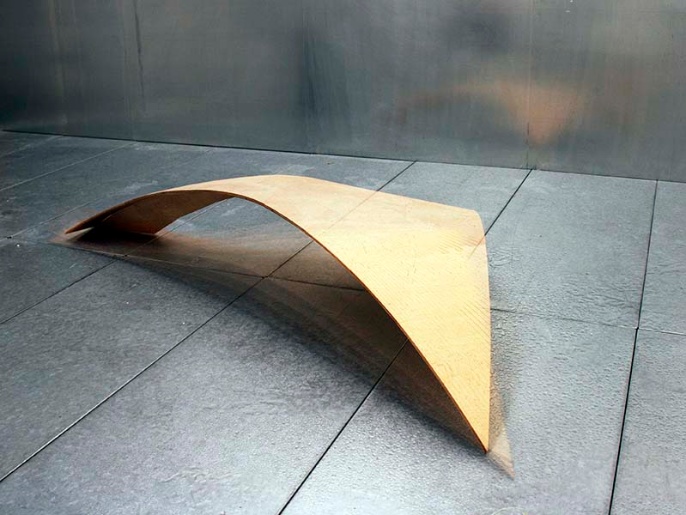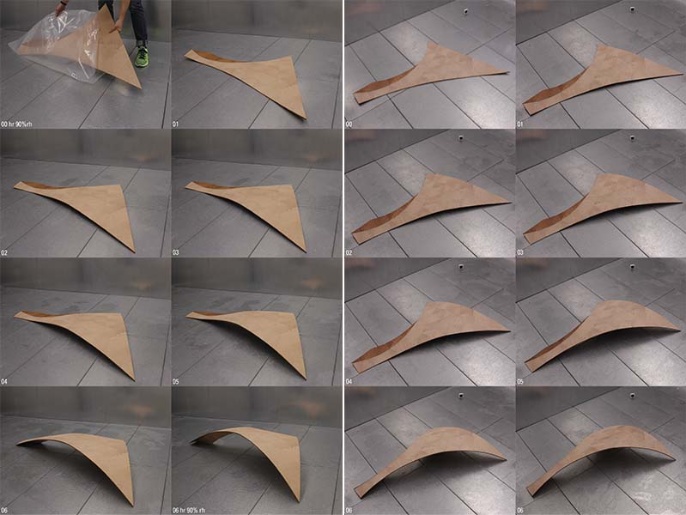Augmented Grain - Behavior tailoring in naturally responsive surfaces
Augmented Grain explores the use of naturally responsive materials in custom tailored self-forming surfaces. The project investigates the potentials of enhancing the existing properties (expansion and contraction) of wood in regards to selection, fabrication, and assemblage, in order to encode surfaces with variable responsive characteristics. A mix of low tech traditional woodworking techniques and advanced computational fabrication methods are used to create functional variation in relation to orientation, intensity, and speed of actuation. The project represents a methodological shift in construction technique from designing and fabricating static parts, which are manually assembled to fit a specific geometry, to designing active material systems pre-programmed to form in response to changes in environmental conditions. This shift from static to specified active material properties could fundamentally change how architectural scale structures are designed, built, and transform over time. In this context, the research project develops efficient methods for tailored manipulation based on the unique characteristics of individual wood parts, while simultaneously developing 1:1 scale self-forming building elements.
Principles in regards to thickness and orientation of bi-layer composites were investigated in the relation to the hygroscopically actuated bi-layer shell of Beech nut seed pods. Preliminary research investigated the effects of material specific manipulations on the hygroscopic behavior of wood veneer. Intra part, mesoscale manipulations were used to adjust the responsive behavior within single sheets of wood veneer, and a uniform composite layer.
The primary investigation focused on developing methods for transferring locally differentiated expansion and contraction into responsive changes in global curvature throughout large scale surfaces. Each surface was designed as a 2D, dry, “flat pack” surface that will self-form to a specified 3D geometry when subjected to higher humidity conditions. Additionally, a method of curved folding is implemented into the surface design to provide additional rigidity as the surface transitions to the 3D form. The surfaces are designed and tested digitally using spring based physics simulations (Rhino, Grasshopper, Kangaroo) that combine aspects of curved folding and curvature actuated within a surface.
Wood species and rough cut timber sections are selected based on the desired amounts of curvature, and local availability. Fabrication data is then extracted from the design surfaces to orient and regulate the curvature of each local part. Parts are CNC milled with locally specific joints and detailing, and hand assembled to form a bilayer composite surface. Surfaces are kept dry throughout the production process, then exposed to high, but naturally occurring ranges of humidity (80-90% rh) for testing. Each surface is tested through multiple cycles of transformation, and 3D scanned throughout the process in order to compare the physical form to the digitally designed target surface. This data is then used to more accurately calibrate and design future surfaces. Further development is underway to increase the scalability and resolution of variation within large scale self-forming building elements.
Image credits:
0. Bi layer micro-structure in hygroscopic activated beechnut seed pods shell
T. Grun, Institute of Geo-sciences, University of Tübingen.
1. Bi layer micro-structure in hygroscopic activated beechnut seed pods shell
T. Grun, Institute of Geo-sciences, University of Tübingen.
ITECH M.Sc. Thesis Project 2014: Augmented Grain - Behavior tailoring in naturally responsive surfaces
Dylan Wood
Thesis Advisers: Oliver Krieg, David Correa
Thesis Supervisor: Prof. Achim Menges
Second Supervisor: Prof. Jan Knippers
Augmented Grain explores the use of naturally responsive materials in custom tailored self-forming surfaces. The project investigates the potentials of enhancing the existing properties (expansion and contraction) of wood in regards to selection, fabrication, and assemblage, in order to encode surfaces with variable responsive characteristics. A mix of low tech traditional woodworking techniques and advanced computational fabrication methods are used to create functional variation in relation to orientation, intensity, and speed of actuation. The project represents a methodological shift in construction technique from designing and fabricating static parts, which are manually assembled to fit a specific geometry, to designing active material systems pre-programmed to form in response to changes in environmental conditions. This shift from static to specified active material properties could fundamentally change how architectural scale structures are designed, built, and transform over time. In this context, the research project develops efficient methods for tailored manipulation based on the unique characteristics of individual wood parts, while simultaneously developing 1:1 scale self-forming building elements.
Principles in regards to thickness and orientation of bi-layer composites were investigated in the relation to the hygroscopically actuated bi-layer shell of Beech nut seed pods. Preliminary research investigated the effects of material specific manipulations on the hygroscopic behavior of wood veneer. Intra part, mesoscale manipulations were used to adjust the responsive behavior within single sheets of wood veneer, and a uniform composite layer.
The primary investigation focused on developing methods for transferring locally differentiated expansion and contraction into responsive changes in global curvature throughout large scale surfaces. Each surface was designed as a 2D, dry, “flat pack” surface that will self-form to a specified 3D geometry when subjected to higher humidity conditions. Additionally, a method of curved folding is implemented into the surface design to provide additional rigidity as the surface transitions to the 3D form. The surfaces are designed and tested digitally using spring based physics simulations (Rhino, Grasshopper, Kangaroo) that combine aspects of curved folding and curvature actuated within a surface.
Wood species and rough cut timber sections are selected based on the desired amounts of curvature, and local availability. Fabrication data is then extracted from the design surfaces to orient and regulate the curvature of each local part. Parts are CNC milled with locally specific joints and detailing, and hand assembled to form a bilayer composite surface. Surfaces are kept dry throughout the production process, then exposed to high, but naturally occurring ranges of humidity (80-90% rh) for testing. Each surface is tested through multiple cycles of transformation, and 3D scanned throughout the process in order to compare the physical form to the digitally designed target surface. This data is then used to more accurately calibrate and design future surfaces. Further development is underway to increase the scalability and resolution of variation within large scale self-forming building elements.
Image credits:
0. Bi layer micro-structure in hygroscopic activated beechnut seed pods shell
T. Grun, Institute of Geo-sciences, University of Tübingen.
1. Bi layer micro-structure in hygroscopic activated beechnut seed pods shell
T. Grun, Institute of Geo-sciences, University of Tübingen.
ITECH M.Sc. Thesis Project 2014: Augmented Grain - Behavior tailoring in naturally responsive surfaces
Dylan Wood
Thesis Advisers: Oliver Krieg, David Correa
Thesis Supervisor: Prof. Achim Menges
Second Supervisor: Prof. Jan Knippers


